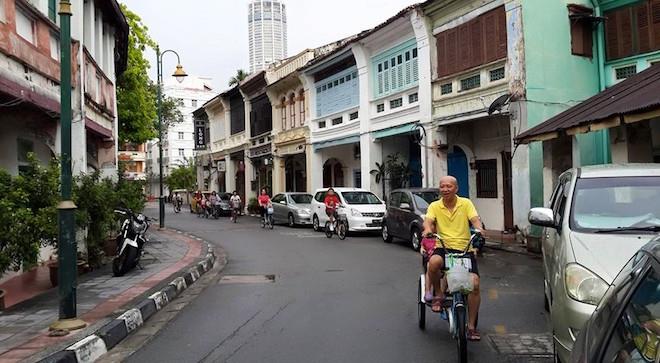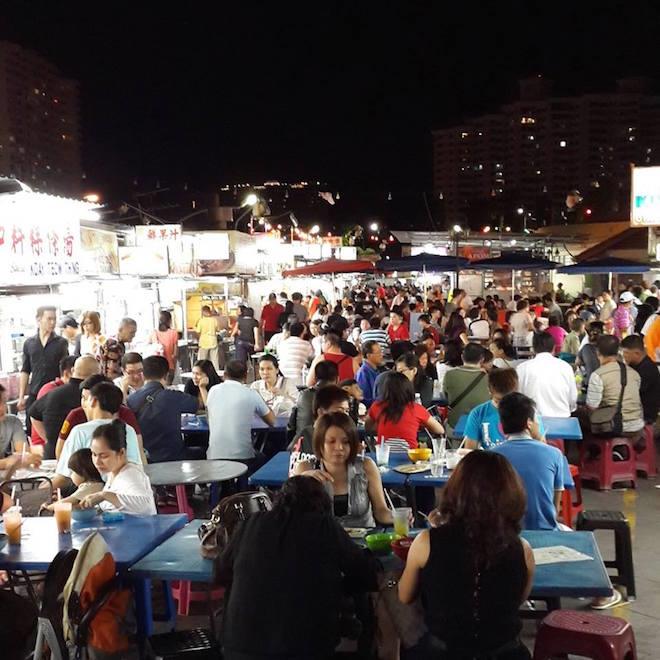At last count, the whole state of Penang has around 1.6 million divided evenly between the mainland and the island. Each year, the population expands temporarily by 50 per cent at any one time, due to visitors. The past couple of years, it was recorded to have welcomed around eight million tourists. It is a very welcomed temporary expansion to its population. To encourage it further, Penang has been lauded for its street food of age-old recipes, unique heritage architecture where east and west designs mingled, multicultural society, colourful traditions, undefeatable champions of food and some endearing social traits that will win any visitor over.

· Each sentence is almost always punctuated with ‘lah’. It’s to emphasise or drive home a point, much like the Dutch use of ‘joh’. It doesn’t seem to originate from a particular racial group but seem to stem from the Malaysian society in general. For example: Yes lah; no lah; just relax lah; don’t worry lah. See how it works? You’ll get the gist of its usage after being on Penang streets for an hour or two.
· Sentences are economical word wise. For example: You want tea?; You come from where? Regardless, the message is charmingly, if not clearly, conveyed.
Eating Habits
Penangites eat all the time, all day, every day. Everything centres around
food. You can find food stalls at virtually every corner of Penang, at almost
every hour of the day. There are no rules here – noodles, rice, porridge and
even dessert can be eaten as breakfast, lunch, dinner or as all three meals. On
the mainland such as Bukit Mertajam and Nibong Tebal, for instance, there are
eateries open by 8am offering a dizzying array of Malay curries, grilled fresh
fish and varieties of vegetable dishes to be eaten with steaming rice – a true
farmer’s breakfast, this is.
Where to try Malay food for breakfast in the mainland:
Seberang Perai Utara
Seberang Perai Selatan
Most food courts or hawker centres open by around 5pm and it is a one-stop food
tasting centre since there is a wide range of Penang street food on offer in
these places. The rule of thumb is, follow your nose, plus some of the
recommendations below.

· Northam Beach Café on Jalan Sultan Ahmad Shah is good for grilled fish and assam laksa, and surprisingly a stall serving German fare such as sausages and the like.
· Gurney Drive hawker centre is good for pasembur, char koay teow, nasi lemak panas and rojak buah.
Where to try the full street food experience in the evening:
· Lebuh Kimberley and Lebuh Chulia in George Town, noodle dishes such as char bee hoon and char koay teow here are pretty tasty.
· Jalan Raja Uda in Butterworth offers an array of usual favourites such as stir-fried as well as soupy noodles.
Where to try day hawker centres in George Town:
· Sri Weld Food Court on Lebuh Pantai is good for nasi lemak, koay teow th’ng, beef noodles and pan mee for breakfast and mee goreng mamak for lunch.
Bumping Along in
Penang
For Penangites, two most popular forms of transportation are cars and
motorcycles, and almost everybody has a kind of vehicle. Add the amount of
tourists plus the buses, taxis, tour buses and cars, Penang island can get
pretty congested during holiday or festive seasons but that is to be expected
since it is a holiday island. Yet, going to work during the global rush hour on
a workweek is not a problem here. Although the weekend traffic on the island,
especially, can be a little heavy, it is rare that it stagnates.
Penang is becoming more and more bicycle friendly and most drivers are obliging
when it comes to cyclists’ right of way, more so within the heritage site of
George Town and the curvy coastal road of Batu Ferringhi. Public transportation
such as buses and taxis are widely used too and possible to hail them at
designated stops. Although, this doesn’t apply to trishaws since they only mill
around the inner city area of George Town and you can hail them as you see them
approach and the best way to view the heritage site since they can deftly
access narrow old lanes.
Image credits: Su Aziz